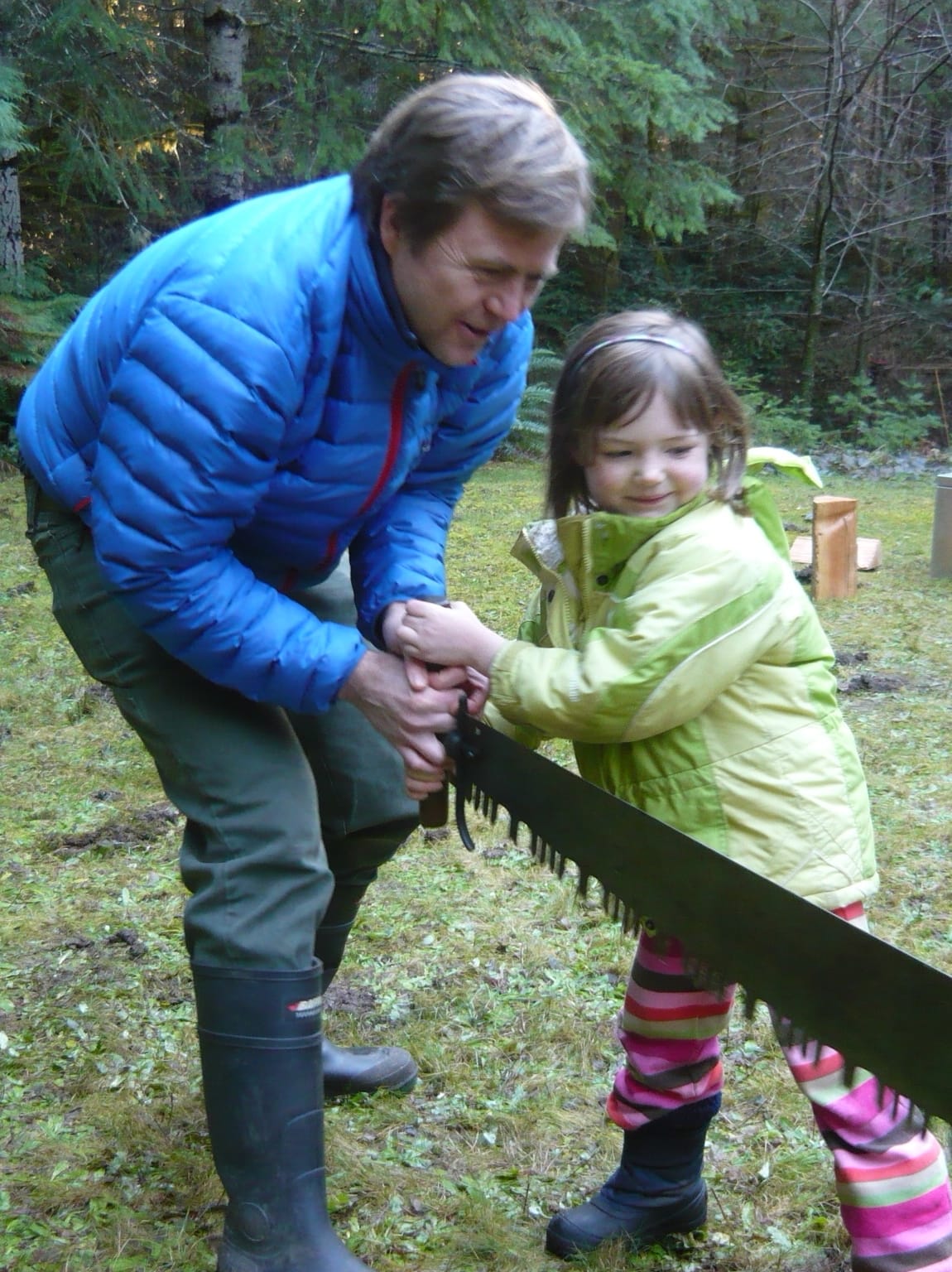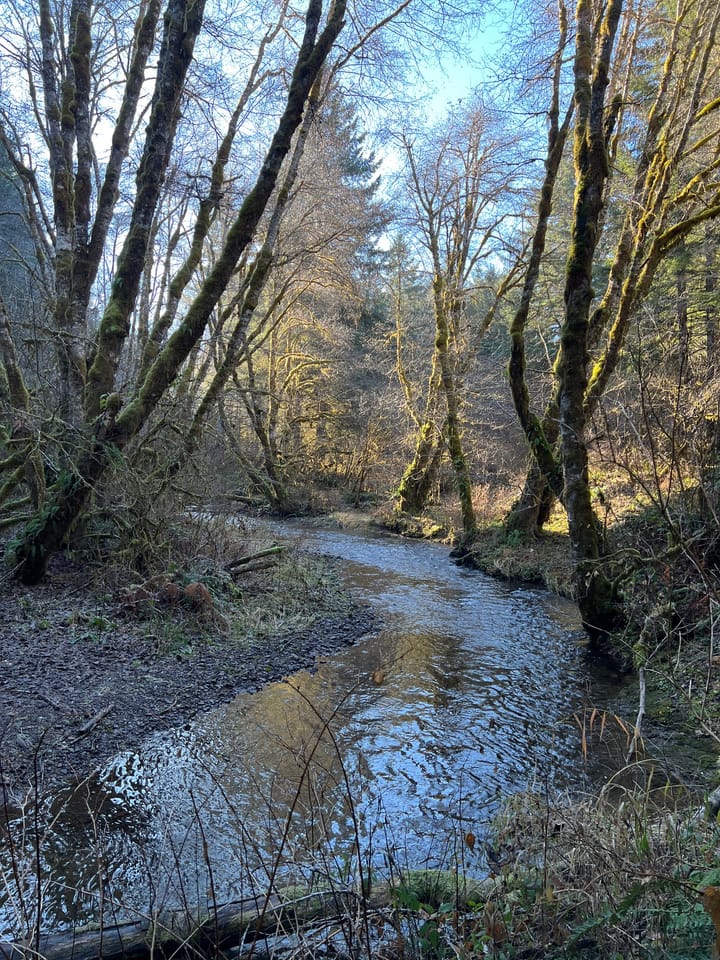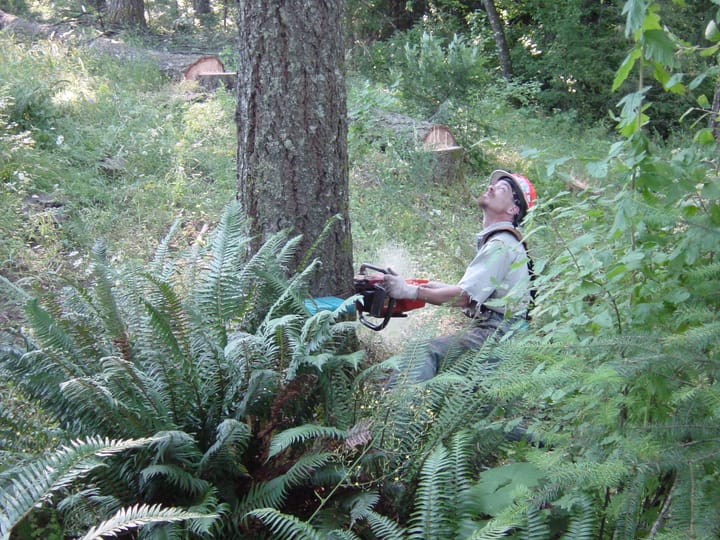I've Seen 'Em!

Considering How Forests Help Grow the People We Need -
Let’s admit it. There is a question on many of our minds. “What’s the future of our species?”. More often than not it goes unspoken, but from conversations with many, particularly young folks, I know that the question is there. As you’ve heard, some feel that it is a significant question, while others disagree. If we choose to alter course during this crucial hinge point in time, that choice depends on one, key ingredient – our ability to create and support the type of people with the characteristics needed to lead us out of our current predicament.
You know the predicament I am referring to – manifest in the interwoven challenges of climate change, ecological disintegration, widening inequity and intolerance between people, degradation of freshwaters and oceans. They are all consequences of a species that chooses to ask more of its home than the home is able to provide. The many talented father of urban and regional planning, Lewis Mumford, phrased the question this way (paraphrased) “This is a wonderful and remarkable place; do you have what’s required to successfully live here?”. One ingredient that is essential is leadership. Do we have the needed leaders – and followers? Do we know how to cultivate and support them? Do we know how to remake ourselves?
As a forest owner and steward I have the good fortune to encounter, observe, and analyze the traits of many species of animals. They range from the micro, such as soil dwelling invertebrates, to the macro, whose meat could feed a family through the winter. Of all of the forest species, the one I find most fascinating is my own – homo sapiens. In spite of our forests being far off the beaten track and on the road to nowhere, a surprisingly large number and variety of humans pass through. While the behavior of some visitors cause us to hold our heads for the future of our kind, an encouragingly large number stimulate in us a sense of hope and possibility. What kind of people are likely to provide the leadership that our species need? I think I know – because I have seen them. Not only have I seen them, but I’ve had the chance to consider the experiences and environments that appear to have shaped them. Knowing that “nurture” , as well as “nature”, shapes who we become, I continue to try to better understand the specific ways that these needed leaders/citizens have been nurtured into the people that they are. I should explain my choice to use the term “leaders/citizens”; I blend the two because while we absolutely need a rising class of leaders/citizens, of all ages, there is an equally great need for what I consider citizens, people with the ability and willingness for follow and to prioritize working for positive, shared futures.
Of course, the pathways are as unique as the individuals and we should be careful about making generalizations. At the same time, I believe that it is not unreasonable to hypothesize that there might be something like a sequence of experiences that have shaped many of these people. Experiences from one stage prepares for, and may lead on to, the next. In sharing these thoughts, I have no intent to be prescriptive or suggest that there is only one path; instead my aim is to describe what I have had the fortune to observe. After all, isn’t a core responsibility of a forest steward to observe many species and analyze their behavior toward the goal of better understanding?
Stage One – Affinity/Connection/Affection – A foundation is created through building a solid bond with a place. Ever deepening awareness and understanding of the many dimensions of the place; ecological, cultural, historic, economic, political; may lead to a sense of interdependence and shared identity with the place. Captured by the African proverb “I am because we are – we are because I am”, this stage is artfully explored in Wendell Berry’s 2012 Jefferson Lecture, “It All Turns on Affection”. Whether our leader chooses to stay put, digging more deeply, as one might through the layers of an onion, or transfer the habits of connection to new geographies, we are all changed by these experiences of relationship to a place.
Stage Two – Awareness of Change Through Time – Though it may be inevitable, once one comes to know and care about a place, we’re likely to dig into better understanding how and why the place has changed over time. Fortunately some of these changes may be judged to be for the better. Unfortunately those of us attentive to the changing status of the ecological community too often discover that change is too often synonymous with degradation. The power of Aldo Leopold’s observation endures “(o)ne of the penalties of an ecological education is that one lives alone in a world of wounds”. It is human nature to irrationally assume that the way we know a place when we first encounter it is representative of the way it has always been. If we do this, we are blinded to what many call shifting baselines. An example could be reminiscing about what we thought were the plentiful salmon runs in the nearby creeks of our youth, unaware that there have already been tenfold declines in those runs since what our grandparents observed as children in the same creek and even greater declines since first contact. The graph of returning numbers of salmon stairsteps down with each subsequent generation, while we often only acknowledge the stairstep that we know through direct experience. Perpetuation of our frontier/pioneer culture and economy and culture depends, in part, on enough of us choosing not to understand and acknowledge these declines. Back in the forest I reflect on groups of wide awake students that pay us visits. I sense in some that their schooling and life experiences are broadening their awareness that for nearly all of us we live in landscapes that has been ecologically degraded. Simultaneously, I sense in many that life experience had taught them that they can and should make a positive difference.
Stage Three – Sensations – In 1805 while being stormbound for several days on a rocky cliff near the mouth of the Columbia River, Meriwether Lewis observed in his journal that “a feeling person would be distressed by our situation”. The statement suggests a cause and effect relationship “If they were aware, it would result in a sensation of distress”. From what I see, experiences from the first two stages often lead to strong feelings in many of us. In some cases, the feelings may be positive, such as a sense of patriotic pride based on awareness of problem ones country has solved. What I sense more often in our forest visitors is some blend of anger, grief, frustration, and despondency that are a result of the combination of caring and growing awareness. We comfort students who cry out of frustration with their fellow students’ apparent indifference to the sense of urgency and distress that’s being communicated. A brief internet search for “climate change and grief” generated over 17 million results. A recent Yale University study found that 1/5th of Americans qualify as climate fatalists.
Stage Four – Taking Action – In stages four and five, we rebound from the depressing realities of stage three to see our emerging leaders/citizens reach a number of more uplifting forks in the road. While some will choose to deny, ignore, or bury the feelings that they have, others will choose to act on their feelings. Plenty of philosophical lines of reasoning are available to provide justification for those who choose not to engage, including “it’s all hopeless, so why bother?” and nihilistic conclusions that nothing maters. Of those who act, some will choose destructive actions while others will work toward what they see to be constructive ends. For me, a key moment in stimulating my reflection on this overall topic was when I heard a young man, who is doing remarkable work using video to document forest issues, explain that he is motivated to “.....do something constructive with the frustrations that I feel”. A crucial question in this stage is whether the person’s life experiences have taught them that they are capable of making a positive difference? Or in more current lingo do they believe that they have agency? Evidence that some educators have chosen to develop educational experiences that are deliberately intended to build this awareness in their students. I saw the ongoing need for this work when I repeatedly overheard students try to turn away from caring with the statement “Like I might care, if I thought I could make a difference”. Fortunately for us – and him – the young video producer has somehow learned that he does have the ability to try to make a difference. In our forests we move beyond playing amateur psychologist trying to analyze our visitors to also benefit from young citizens successfully taking actions to restore the land’s health. Examples include college seniors Emmy and Jacob designing and implementing riparian restorations, graduate student, Dan, analyzing the function of a wetland and creek network to inform ongoing restoration, and many similar projects. They arrive committed and determined, and leave even more so. At the same time that we might assume that it is easy and logical for our leaders/citizens to move from awareness through feelings and on to taking action, we should also acknowledge that in many cases the choice to take action requires one to be willing and able to stand outside of social norms. Consciously or subconsciously, our action takers know that there may be prices to paid for their choice of action and that life is, in some ways, more comfortable and secure for those who choose to accept and support the status quo. Similarly, we should acknowledge that the culture of specific families and communities may be more or less supportive of those who choose to work toward improvement.
Stage Five – Achieving Results – The final fork in the road is shaped less by the hands of our emerging leader/citizens and more by the environment in which they live. Of those who choose action, some will find success, others will not, and many will navigate the messy combination of the two, with some efforts working out and others not. Conversations with those who have chosen this path show that those who are most effective develop the psychological toughness needed to weather the normal ups and downs without losing their drive to keep making a difference. Observation of the two-legged fauna of our forests show how many are energized and uplifted by the choices they make to learn, care, and engage in making positive differences.
Having watched the development of people, in the forest and beyond, we’re pleased to celebrate when it goes right and to acknowledge and critically learn when the outcomes are less positive. Too often well intentioned, but misguided, educators counterproductively lead students into experiences that they are not prepared for. Briefly summarized, we’ve seen this include: impelling students into trying to solve a problem before they have a chance to understand and care about the place or the causes of the problem, failing to show students through, manageably small projects, that they have the ability to make positive change, challenging them with situations that they perceive as being overwhelmingly large, or not taking enough time to help students learn to self reflectively acknowledge and understand their feelings and their options for what to do with them.
In the forests we are energized when we watch skilled and thoughtful teachers shape forest experiences that perceptively match the students’ needs. When second graders come for a seasonal round of explorations, the total focus is on “what is happening here? What do we notice? Isn’t this remarkable!”, with strong discipline not to move above stage 1. Five years later, seventh graders come fired up to investigate questions such as “how do we know if a forest ecosystem is healthy? How healthy is it and how and why is it changing?”. Some of the most powerful learning we see is when teachers help students slow down, quite down and reflect on the feelings that are generated by their forest explorations – with results shared through poetry, journaling, or publicly shared blog posts. Building on all of this, older students often join us ready and committed to take on all stages, with questions like “how does this place work? If is it degraded, not only what can we do about it, but what will we do about it?” In the best examples, students find funding, implement their restoration projects, and return from new careers in restoration to review the growing results. While some visitors arrive with a teddy bear and others with thick beards or kids of their own, we see that age is not a reliable indicator of which stage of involvement will be most appropriate; for all, a foundation of building a sense of interdependent familiarity and affinity is a necessary starting point or prerequisite. From all of the above, our visiting helpers and we find reason for hope.
The Upshot -
If our energetic and immature species has the ability and the will to turn the corner and successfully heal our untenable relationship with the earth, the key ingredient is fostering the development of new leaders/citizens with the affinity, awareness, knowledge, imagination, creativity, undaunted drive, and values needed to do what must to be done. While some of us may just stumble our way into life experiences that shape these traits, we, as a society, have the choice to more deliberately consider how these traits might best be developed in the rising generation. Increased awareness may assist us each personally, as we choose our own paths in life, inform us as we try to help others, or even just help us better understand the fellow travelers who we meet along life’s road. Walking through our forests and looking out across the wider landscape of western Oregon, I am reminded of our good fortune to live in a place that can grow many things – tasty, nutritious food; beautiful, strong wood; inspiring and sustaining landscapes; vital and adaptable towns and cities. While these are all valuable, perhaps they are not the most important thing that we can grow here. Could it be that the most essential thing we have the ability to grow in this place is a new type of person – a new generation of folks - who will join with us, as leaders and committed citizens, in doing what must be done?


